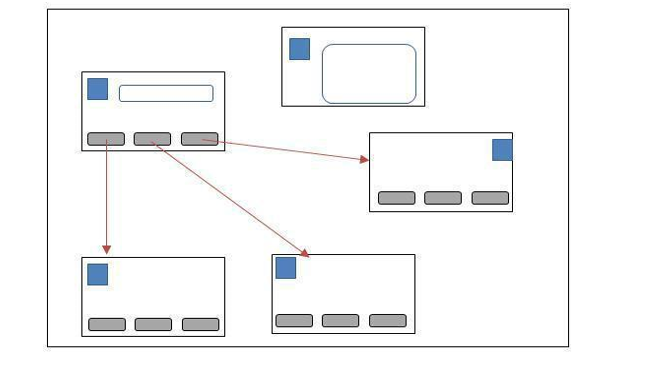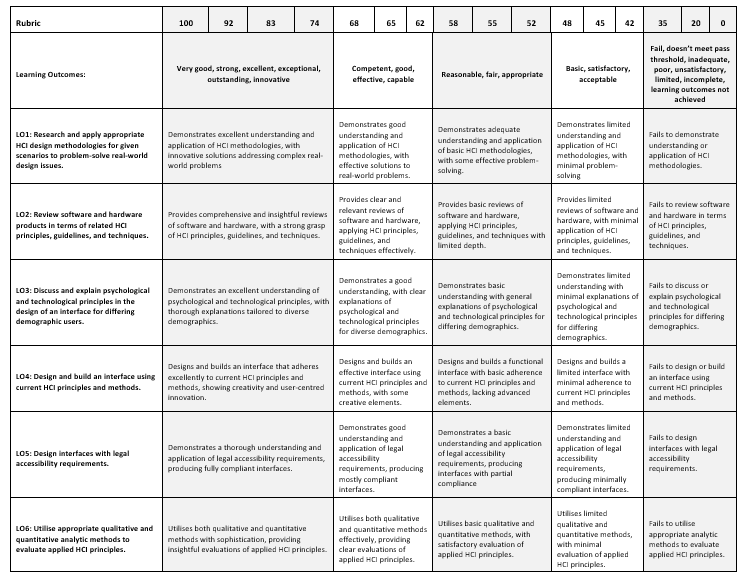- Unit 28 Cloud Computing Assignment : The Application of Cloud Computing to an Organization
- FBU4003 Understanding Principles of Business Assignment Case Study Report
- BUSI12334 Personal and Academic Development Level 4 Assignment 1 Fashion Sustainability Report
- Leadership and Management in Adult Care Assignment Report
- 425Z0087 Quantitative Data Analysis Secondary Data Analysis Semester 1 – Report Assessment Instructions & Information
- Criminology Assignment: Investigating the Representation of Ethnicity in Media Crime Reporting Versus Official Crime Data
- D7115 Technical and Digital Leadership Assignment: A Critical Analysis of Organisational Digital Readiness, Strategic Transformation Planning, and Leadership in Enabling Digital Change
- Level 5 in Leadership and Management in Adult Care – Unit 19 Assignment : Ensuring Health and Safety Compliance and Best Practices in Adult Care Settings
- N1582 Managing Operations Assignment : Enhancing Efficiency through ITO, 4Vs, Capacity Management, and Process Mapping
- MANM376 International Finance Project Assignment: Critical Analysis of Tata Steel, Godrej Properties, and LVMH’s Strategic Financial Decisions
- AB Sugar Company Strategic Management Assignment: External, Internal, SWOT & Sustainable Growth Strategy
- Unit 3 Project Assignment Report: Planning and Delivering a Professional Training Event to Develop IT, Leadership, or Soft Skills
- CIPD 5OS05 Level 5 EDI Strategy Report: Promoting Equality, Diversity and Inclusion in Public Sector Service Organisations
- Water Resources Assignment: HEC-RAS Flow Analysis and Hydraulic Jump Evaluation in Open Channels
- HRM Reflective Assignment 1: Case Study on Strategic Growth & Employee Retention
- Qualifi Level 4 HSC401 Academic Study Skills Assignment: Portfolio on Personal Development, Source Evaluation, and Research Relevance in Health and Social Care
- AFM0ICD Budgeting Advice Assignment 1: Mr Confused Case Study on Business Budget Planning, Monitoring and Communication Using Microsoft Office Tools
- W84512A Enterprise Assignment: Business Analysis of a UK-Based SME Using Market Research, PEST & SWOT Tools BTEC Level1/Level2
- 5COSC022W JAX-RS REST API Assignment: Airline Agency System for Flight, Passenger & Booking Management
- 6315_6327_6220BEUG Construction Project Report: Yale College Redevelopment Programme Management
QHO542 HCI Case Study Analysis Assignment: Solent University Design Report
| University | Southampton Solent University(SSU) |
| Subject | QHO542 Human Computer Interaction |
Assessment Task
The QHO542 assessment is a 2000-word essay conducting a Human Computer Interaction (HCI) critical review of the website for: ‘Solent Alumni Website’, Students will do a case study analysis of the Solent University Alumni Association current website and related services / resources.
See https://www.solent.ac.uk/alumni
The research and design diagrams can be done as a group collaboration. The report final analysis and conclusions need to be done individually.
Report Structure
The report is broken into 3 main parts:
- User and business needs analysis
- Prototype – Interface research, design and development
- UX Testing
Part 1: User and Business Needs Analysis
The deliverables for this section are:
- Gantt chart – project work plan
- Mind map – Soft Systems Rich Picture
- Website sitemap
- Market Research analysis – summary table
- User Profile & Journey Map
- HTA Hierarchal Task Analysis chart.
- Identify three pain points
- Establish the evaluation criteria e.g. user satisfaction
User needs are requirements that add value to a product, service or environment for a customer. Capturing user needs is a process of engaging users to understand their problems, processes, goals and preferences.
You should produce a (User / Business) Need Analysis Document, which will contain all relevant details to enable the production of prototype. The section must contain all the appropriate elements that are required to communicate your design intentions, and the rationale for the design choices made.
Before you begin, you need to familiarise yourself with the sample case study? What are the main functions, business models, marketing strategies and user profiles? You should do market research study to find:
- Several samples of the competition
- What are the key features?
- What are the gaps in the case study business and HCI model?
Do You Need Assignment of This Question
Required Elements:
1. An introduction about the system and highlights about the main functions are required in this report.
Introduction should rationalise the choice of why you decided to design with a UCD (User Centred Design) approach or TCD (Task Centre Design), it is imperative to vividly define your user group, define their task and goals, experience levels, what functions they expect from the system, what information they need from the system, and understand how users think the system should work.
This should also include the Comparative table based on design principles, Gestalt Principles and Time to Complete.
User Analysis (Aims primarily at identifying the main user goals.)
- Build 2 personas of a typical user (Student Union Member)
Task Analysis (Aims primarily at identifying the main system tasks).
- Identify and explain three of the main user tasks and map them out to user goals
- Construct these tasks and illustrate them using one HTA Hierarchal Task Analysis chart.
Part 2: Prototype (Interface Research, Design and Development)
The deliverables for this section are:
- Underpinning HCI theories / principles / heuristics to inform wireframe and prototype designs
- Storyboard or wireframe
- Prototype development on three pain points
- Accessibility and data protection (GDPR) guidelines.
- You are required to have a live online working prototype of the two pain points.
Part 2 is the production of a semi-working prototype. You are required to produce the prototype interface using an appropriate prototyping tool, online prototyping tools will be used or a web design tool. You should build & implement the result of your user requirements analysis, evaluation and design in Part 1.
Interface Concept:
Plan & verify the usability of your design with a visual communication tool (storyboards). Construct a set of storyboards to define the elements of your design. Defend the rationale for your design choices with accompanying text which accompanies your storyboards. Particular attention should be paid to good use of icon metaphors and affordance.

A set of storyboards
Interaction with the Complete System (Company main interface)
It is required that the system should have at least a standard logging on security system with a username and password. The authentication screen must be visually appealing and comply with logo and colour specifications.
A Welcome to Main Menu interface could be the main interface that users first interact with and could link to the other interfaces. It should have clear, well considered icon metaphors to access these other forms and will have a company logo and a suitable company icon metaphor positioned properly. This and all other interfaces/screens should have the company icon metaphor integrated in a consistent position and could also use suitable icon metaphors throughout which clearly suggest the affordance of screen objects to users. All interfaces may have your team’s name appropriately displayed. Drop down and/or popup menus may also be integrated into your system
Buy Answer of This Assessment & Raise Your Grades
Part 3: Testing and Integration
Any data collection and analysis must be done ethically and comply with Solent University, GDPR and BERA guidelines.
Students are encouraged to work with study partners/groups on research activities for this assessment.
Individual reports and conclusions must be submitted, but bibliographies and market research can be shared. Students are encouraged to share draft work for peer review to promote active learning.
Use of AI in this Assessment
Generative AI is permitted at Solent University under specific conditions and must continue to follow the university’s rules around Academic Misconduct and the AI and Academic Integrity policy. In this assessment, you are allowed to use AI for the following tasks:
New for 2024-25 Semester 1: Use of Artificial Intelligence (AI) reference
Just as you would search for a journal paper or website resource, we suggest at least two uses of an AI generator. The protocol for using an AI tool is:
- Identify what platform(s) used. This way the data can be cross referenced.
- Justify the search terms used e.g. topic, sub-topic, context of the problem, level of complexity/difficulty (BSc Level 6), number of outputs or word count.
- Drafts (raw data) to be added to the appendix as a weblink to the cloud location. This file must have open permission access.
- Synthesis of the AI references and paraphrased to match the style of the literature review assessment in the body text e.g. 1st or 3rd person.
AI and Academic Integrity Policy
Learning Outcomes
This assessment will enable you to demonstrate in full or in part your fulfilment of the following learning outcomes identified in the Module Descriptor:
What you will be able to do after the module:
- LO1: Research and apply appropriate HCI design methodologies for given scenarios to problem-solve real-world design issues.
- LO2: Review software and hardware products in terms of related HCI principles, guidelines and techniques.
- LO3: Discuss and explain psychological and technological principles in the design of an interface for differing demographic users.
- LO4: Design and build interface using current HCI principles and methods.
- LO5: Design interfaces with legal accessibility requirements.
- LO6: Utilise appropriate qualitative and quantitative analytic methods to evaluate applied HCI principles.
Living CV
As part of the University’s Work Ready, Future Ready strategy, you will be expected to build a professional, Living CV as you successfully engage and pass each module of your degree.
The Living CV outputs evidenced on completion of this assessment are:
- Contribute to the class group resources and peer review.
- Demonstrate good written and verbal communication skills.
Please add these to your CV via the Living CV builder platform on Solent Futures Online

Important Information
Solent University Academic Regulations 2024-25
Late Submissions
You are reminded that:
- If this assessment is submitted late i.e. within 7 calendar days of the submission deadline, the mark will be capped at 40% if a pass mark is achieved;
- If this assessment is submitted later than 7 calendar days after the submission deadline, the work will be regarded as a non-submission and will be awarded a zero;
- If this assessment is being submitted as a referred piece of work, then it must be submitted by the deadline date; any Refer assessment submitted late will be regarded as a non-submission and will be awarded a zero.
Are You Looking for Answer of This Assignment or Essay
Assessment regulations
Extenuating Circumstances
The University’s Extenuating Circumstances (EC) procedure is in place if there are genuine short term exceptional circumstances that may prevent you submitting an assessment. You are able to self-certify for up to two assessment dates in any semester without supporting evidence for an extension of up to seven calendar days for coursework or to defer an exam to the resit period.
Alternatively, if you are not ‘fit to study’ (or you have used up your two self-certification opportunities), you can request:
- an extension to the submission deadline of 7 calendar days, or
- a request to submit the assessment at the next opportunity, i.e. the resit period (as a Defer without capping of the grade).
In both instances you must submit an EC application with relevant evidence. If accepted under the university regulations there will be no academic penalty for late submission or non-submission dependent on what is requested. You are reminded that EC covers only short-term issues (20 working days) and that if you experience longer term matters that impact on your learning then you must contact the Student Hub for advice.
Please find a link to the EC policy below:
Academic Misconduct
Any submission must be your own work and, where facts or ideas have been used from other sources, these sources must be appropriately referenced. The University’s Academic Regulations includes the definitions of all practices that will be deemed to constitute academic misconduct. You should check this link before submitting your work.
Procedures relating to student academic misconduct are given below:
Ethics Policy
The work being carried out must be in compliance with the university Ethics Policy. Where there is an ethical issue, as specified within the Ethics Policy, then you will need an ethics release or ethics approval prior to the start of the project.
The Ethics Policy is contained within Section 2S of the Academic Handbook:
Grade marking
The University uses an numeric grade scale for the marking of assessments. More detailed information on grade marking and the grade scale can be found on the portal and in the Student Handbook.
Guidance for online submission through Solent Online Learning (SOL)
Do You Need Assignment of This Question
Prepare your QHO542 HCI SSU Design report with the help of UK Assignment Helper. There are specialized professionals for all categories of assignments who provide you with plagiarism-free and improved content. You are assured that our report-writing service will make you productive and help you score high grades in your academic year. A free list of assignment samples for students written by PhD experts is also provided here that can help you boost your study power and check the quality of the report. So contact us today and get your perfect report!




